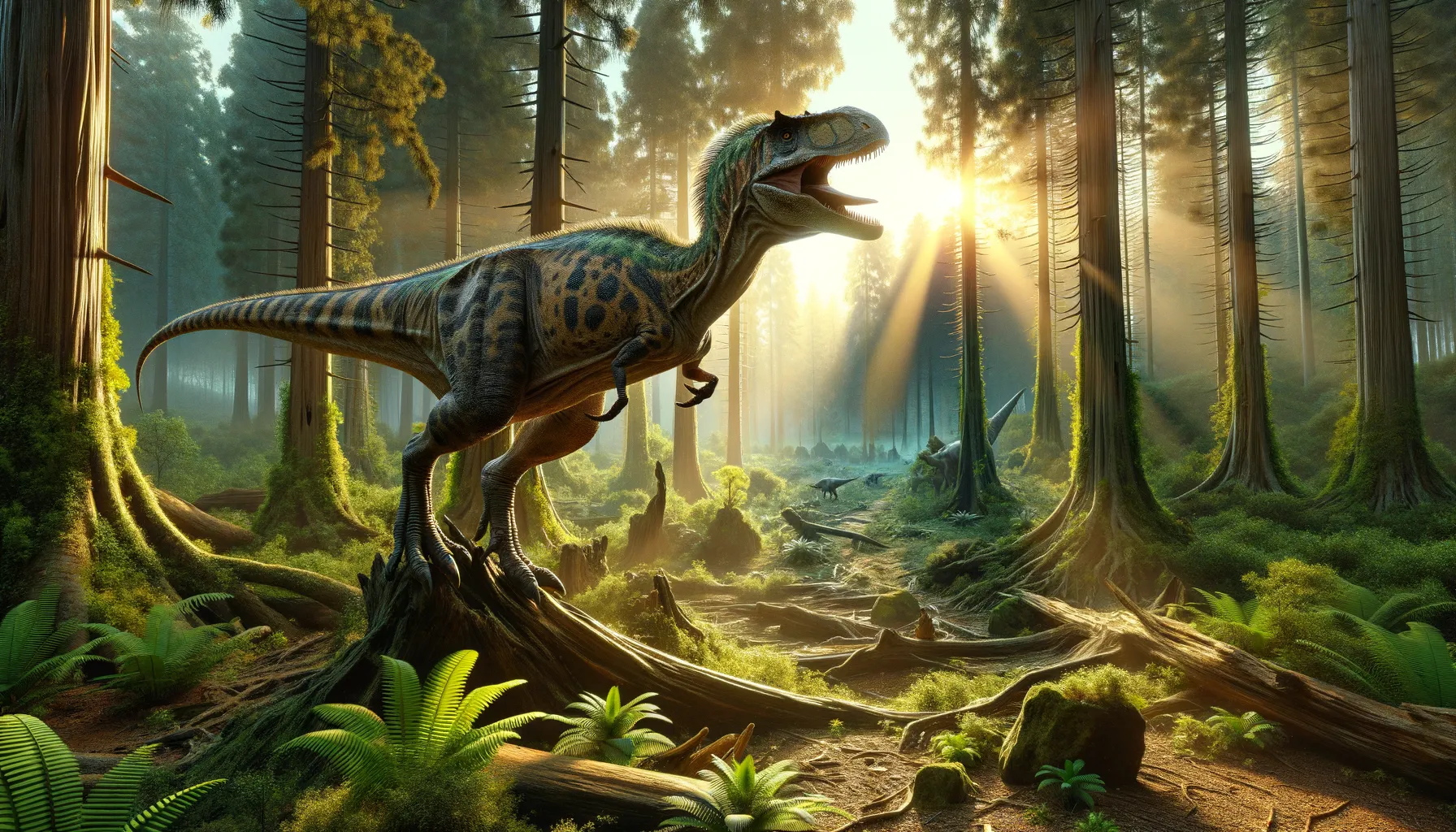
Beipiaognathus
A swift hunter from the Cretaceous era!
Period
Cretaceous
Length
Measured approximately 2 to 3 meters long.
Height
Stood about 1 meter tall at the hips.
Weight
Estimated to weigh around 30 to 50 kilograms.
Beipiaognathus was a small theropod dinosaur embodying the classic traits of nimble, bipedal carnivores from the Cretaceous period. It was discovered in China and provided significant insights into the diversity of small theropods. Beipiaognathus helps us understand the evolution and specialization of small hunters in prehistoric ecosystems. Despite its size, it played a critical role in the ecological balance by preying on small vertebrates and insects.
Diet
Beipiaognathus primarily fed on small vertebrates and insects. Its diet included lizards, small mammals, and possibly eggs from other dinosaurs. The sharp teeth and agile body suited it well for catching quick-moving prey.
Hunting
Beipiaognathus likely employed ambush tactics due to its size, taking advantage of the dense vegetation to stalk prey. It might have hunted alone or in small groups to maximize efficiency and reduce competition from larger predators.
Environmental challenges
Beipiaognathus faced various environmental challenges such as fluctuations in climate, predator competition, and food scarcity. The changes in vegetation and availability of prey due to climatic shifts could have impacted its survival. Larger, dominant predators often posed a significant threat, necessitating strategies to avoid conflict. Its smaller size allowed it to exploit ecological niches inaccessible to bigger competitors.
Speed
Beipiaognathus likely moved at moderate speeds due to its size.
Lifespan
Its lifespan is estimated to be around 10 to 20 years.
First discovery
Discovered in China in the early 21st century.
Fun Facts
- Beipiaognathus was a small theropod dinosaur that lived during the Early Cretaceous period over 100 million years ago.
- The name 'Beipiaognathus' means 'Beipiao jaw,' named after the city of Beipiao in Liaoning Province, China, where its fossils were found.
- This dinosaur was likely a fast runner, with a lightweight body built for speed.
- Beipiaognathus is thought to have had a diet consisting of small animals such as insects and lizards.
- Fossils of Beipiaognathus have been found with well-preserved details, providing valuable insights into the anatomy of small theropods.
- Its discovery has helped paleontologists better understand the diversity of early bird-like dinosaurs.
- Beipiaognathus had long legs and a long tail, features that helped it maintain balance while running.
Growth and Development
Beipiaognathus grew rapidly, reaching maturity in a few years due to its small size. The growth rate was critical in minimizing vulnerability during the early life stages. Fossils suggest it possessed growth rings, similar to modern reptiles, aiding in age estimation. Such rapid growth ensured early reproduction and survival of the species.
Habitat
Beipiaognathus inhabited forested areas with abundant cover and resources. The environment provided ample hunting grounds and shelter from larger predators. Its habitat was characterized by diverse flora, contributing to a rich ecosystem. Surrounding water sources likely supported diverse prey populations.
Interaction with other species
Beipiaognathus interacted with various dinosaurs, small mammals, and avian species. While it was a predator to some, it also fell prey to larger theropods. Competition for resources might have led to territorial disputes among small theropods. Cooperative behaviors possibly existed within species to enhance hunting success.
Natural lifespan
In the wild, it lived naturally for about 10 to 20 years.
Reproduction
Beipiaognathus was oviparous, laying eggs in secure, hidden nests. It exhibited parental care by guarding nests from predators and possibly regulating temperature. Fossil evidence suggests grouping of nests, indicating communal nesting habits. Rapid development post-hatching enabled early independence for juveniles.
Social behaviour
The social behavior of Beipiaognathus might have included small group foraging to improve hunting success. Communication among individuals could involve vocalizations and visual cues during cooperative activities. Territoriality may have been exhibited during breeding and feeding to protect resources. Its social interactions strengthened intra-species bonds essential for survival.
Fossil locations
Fossils of Beipiaognathus have been primarily found in Liaoning Province, China. These discoveries were part of the rich fossil beds known for well-preserved specimens from the Early Cretaceous period. The findings have significantly contributed to understanding the diversity of small theropods in this region.
